What is On-Page SEO and Why Does it Matter?

On-Page SEO refers to the set of actions you take within your website to improve your site’s ranking in search engines.
These actions include optimizing content, site structure, title tags, meta descriptions, and many other elements that help search engines better understand your site and show it to relevant users.
The importance of On-Page SEO stems from the fact that you have complete control over it.
Unlike Off-Page SEO, which depends on factors like link building, you can make significant improvements to your ranking by making changes to your site.
On-Page SEO helps you optimize your website for relevant keywords, improve user experience, and ultimately attract more organic traffic.
This process involves using appropriate keywords in the content, optimizing images, and creating a strong internal link structure.
By taking these steps, you can show search engines that your site is a valuable and relevant resource for users.
In short, On-Page SEO is a vital part of any digital marketing strategy, and ignoring it can lead to missed opportunities.
By focusing on On-Page SEO, you can ensure that your site is optimized for search engines and that users can easily find the content they need.
On-Page SEO plays an important role in attracting organic traffic and helps you to be seen better in search results.
Ultimately, this leads to increased conversion rates and overall improvement of your business performance.
To better understand #SEO, visit the Google website.
Are you dissatisfied with the low sales of your online store?
Rasaweb is your solution to having a professional and high-selling online store.
✅ Significant increase in sales and revenue
✅ Easy and enjoyable shopping experience for customers
⚡ Get a free consultation from Rasaweb right now!
Keyword Research and Choosing the Best Ones for On-Page SEO

Keyword Research is one of the most important steps in On-Page SEO.
Choosing the right keywords helps you optimize your content for the searches that users perform.
This process involves identifying the words and phrases that your target audience uses to find information related to your business.
To get started, use keyword research tools such as Ahrefs Keyword Generator, Keyword Tool, and Google Trends.
These tools help you find search volume, competition, and related keywords.
Look for keywords that have a decent search volume and where the competition is not too high.
Long-Tail Keywords are often good options because they have less competition and can attract more targeted traffic.
When choosing keywords, also pay attention to the user’s Search Intent.
Is the user looking for information, wanting to buy a product, or looking for a specific solution? Optimize your content based on the user’s search intent to get the best results.
Effective On-Page SEO requires a deep understanding of user needs and providing content that fully meets those needs.
By using keyword research tools and analyzing user behavior, you can improve your content strategy and attract more traffic.
On-Page SEO without keyword research is like driving in the dark.
Finally, the selected keywords should be used naturally in your content.
Avoid Keyword Stuffing as this can harm your site’s ranking.
Instead, create valuable and relevant content that naturally incorporates keywords.
Successful On-Page SEO requires a balance between optimizing for search engines and providing a positive user experience.
Optimizing Title Tag and Meta Description

The Title Tag and Meta Description are two important elements in On-Page SEO that play a significant role in attracting traffic from search engines.
The title tag is the title of your page that is displayed in search results and helps users understand what your page is about.
The meta description is a short summary of the content of your page that is displayed below the title in search results.
To optimize the title tag, use your main keyword at the beginning of the title.
The title should be attractive and concise, and have a maximum of 60 characters so that it is fully displayed in search results.
Avoid creating duplicate titles for different pages of your site, and each title should be unique and relevant to the content of the page.
A good title tag encourages users to click on your link and enter your site.
On-Page SEO requires careful attention to detail, and the title tag is one of these important details.
To optimize the meta description, write an attractive and relevant summary of the content of your page.
Use your main keyword in the description and try to keep your description to a maximum of 160 characters.
The meta description should encourage users to click on your link and enter your site.
Avoid creating duplicate meta descriptions for different pages of your site, and each description should be unique and relevant to the content of the page.
The meta description is an opportunity to show users that your page is exactly what they are looking for.
On-Page SEO with optimized meta descriptions attracts more traffic.
In short, the title tag and meta description are two vital elements in On-Page SEO that should be carefully optimized.
By using appropriate keywords, creating attractive titles and descriptions, and avoiding duplication, you can improve your site’s ranking in search engines and attract more traffic.
Effective On-Page SEO requires attention to these details and creating a positive user experience.
Optimizing Content for On-Page SEO
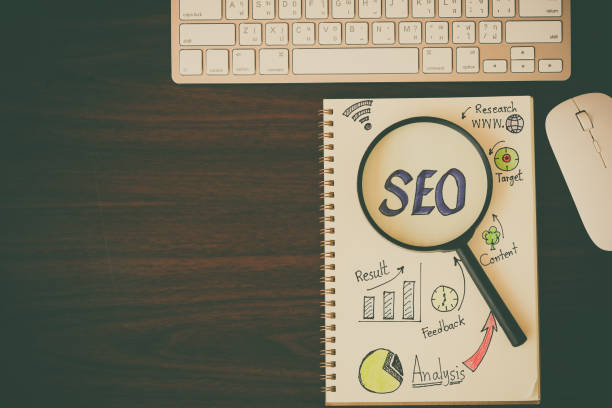
Content optimization is one of the most important aspects of On-Page SEO.
High-quality and relevant content not only helps users find the information they need, but also shows search engines that your site is a valuable resource.
To optimize content, you must first identify the appropriate keywords and use them naturally in your text.
Avoid Keyword Stuffing and instead focus on providing valuable and relevant content.
Your content should have a proper structure.
Use Headings, Subheadings, Paragraphs, and Lists to make your text readable and understandable.
Headings and subheadings should include keywords and help users quickly access the sections they want.
Images and videos can also make your content more attractive and understandable.
Be sure to use Alt tags for images to help search engines understand your images.
Your content must be unique and original.
Avoid copying content from others and try to make your content more valuable by adding your own views, analyses, and new information.
Longer content usually ranks better in search engines, but content length should not come at the expense of its quality.
Always try to make your content comprehensive, accurate, and relevant to the topic.
On-Page SEO with optimized content attracts more organic traffic.
| Feature | Description |
|---|---|
| Keywords | Natural and relevant use of keywords in the text |
| Structure | Use of headings, subheadings, paragraphs, and lists |
| Images | Use of images with appropriate Alt tags |
| Uniqueness | Creating original and non-copied content |
Finally, your content should be updated regularly.
Old and outdated content can harm your site’s ranking.
By updating your content, you can show search engines that your site is active and dynamic.
On-Page SEO requires continuous effort and constant updating.
Are you disappointed with the low conversion rate of your online store?
Rasaweb is your definitive solution with professional online store design!
✅ Increase your sales and revenue
✅ Unparalleled user experience for your customers
⚡ Get a free consultation right now!
Optimizing Images for On-Page SEO
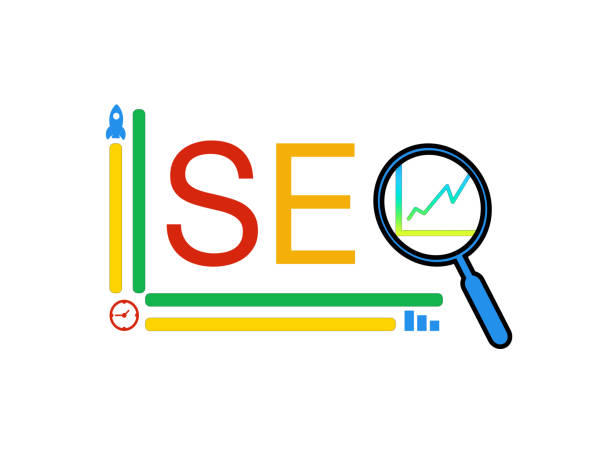
Image optimization is an important and often overlooked aspect of On-Page SEO.
Optimized images can help improve page loading speed, increase the visual appeal of content, and improve site ranking in search engines.
The first step in image optimization is choosing the right format.
JPEG formats are suitable for photos and complex images, and PNG formats are suitable for simple and graphic images.
The WebP format is also an excellent option that offers high quality with a small size.
Image size should be optimized to increase page loading speed.
Use image compression tools such as TinyPNG or ImageOptim to reduce image size without sacrificing quality.
Image file names should also be optimized.
Use descriptive names related to the content of the image and include keywords in the file name.
For example, instead of a name like “IMG_1234.jpg”, use a name like “optimizing-images-on-page-seo.jpg”.
Alt Tags (Alt Text) are very important for images.
The Alt tag is a text description of the image that helps search engines understand the image and display it in search results.
The Alt tag should be descriptive, relevant to the content of the image, and include keywords.
For example, if you have an image of a laptop, the Alt tag can be “laptop-for-programming-on-page-seo”.
On-Page SEO requires attention to Alt tags for images.
Using high-quality images is also important, but you should strike a balance between image quality and size.
High-quality images can improve user experience, but if they are too large, they can slow down page loading speed.
Use image compression tools to provide high-quality images with a small size.
Effective On-Page SEO requires optimizing images with appropriate quality and size.
By taking these steps, you can optimize your images for search engines and users and improve your site’s ranking.
On-Page SEO with optimized images is more attractive.
Internal Link Structure and Its Importance in On-Page SEO
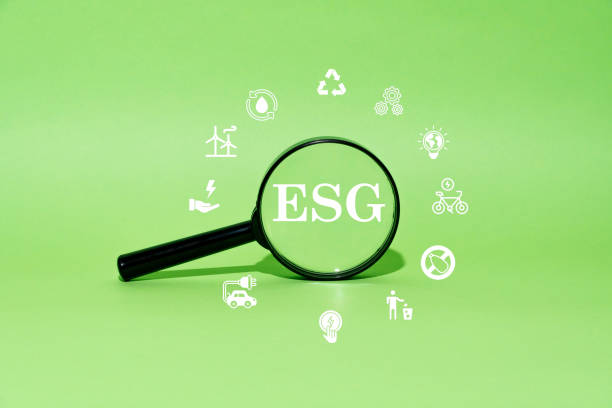
Internal Linking is an aspect of On-Page SEO that helps search engines discover and index different pages of your site and helps users easily navigate your site.
Internal links are links that point from one page on your site to another page on the same site.
These links show search engines how different pages of your site are related to each other and which pages are more important.
To create a strong internal link structure, you must first identify the important pages of your site.
These pages are usually the pages that get the most traffic or the pages that you want to improve their ranking in search engines.
Then, link from these pages to other pages of your site.
Use descriptive Anchor Text that is relevant to the content of the destination page.
For example, if you are linking from a page about “On-Page SEO” to a page about “Keyword Research”, the anchor text can be “Keyword Research”.
Avoid creating too many links on one page.
The number of internal links on a page should be logical and relevant to the content of the page.
Also, avoid linking to pages that have poor content or pages that have no connection to the source page.
A good internal link structure should help users easily access the information they need and help search engines better understand your site.
On-Page SEO with a strong internal link structure provides better navigation.
In short, internal link structure is a vital aspect of On-Page SEO that helps improve site ranking in search engines and improve user experience.
By creating a logical and relevant internal link structure, you can show search engines how different pages of your site are related to each other and which pages are more important.
This helps improve your site’s ranking in search engines and attract more traffic.
Effective On-Page SEO requires a structured and targeted internal link structure.
| How to Use Internal Links | Benefits |
|---|---|
| Helps search engines understand website structure | Strengthens website credibility in search engines |
| Allows search engines to find new pages | Increases inbound traffic to important pages |
Optimizing Site Speed for On-Page SEO
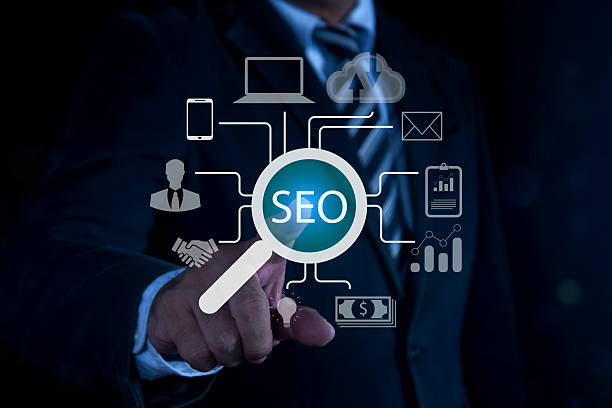
Website Speed is one of the important factors in On-Page SEO that has a direct impact on user experience and site ranking in search engines.
Users expect web pages to load quickly, and if a site is slow, users are more likely to leave it.
Search engines also consider site speed as a ranking factor, and faster sites usually rank better.
To optimize site speed, you must first check your current site speed.
Use site speed testing tools such as Google PageSpeed Insights and GTmetrix to identify the weaknesses of your site.
These tools show you which elements of your site are causing slowness and what actions you can take to improve speed.
Some of the actions you can take to optimize site speed include optimizing images, enabling Gzip compression, using Caching systems, reducing HTTP requests, and using a Content Delivery Network (CDN).
Image optimization includes reducing image size, using appropriate formats, and using Alt tags.
Gzip compression helps reduce the size of site files and increases loading speed.
Caching systems help store copies of site pages to load faster on subsequent visits.
Reducing HTTP requests includes reducing the number of CSS and JavaScript files and combining them.
Using a Content Delivery Network (CDN) helps distribute your site’s content across different servers around the world so that users receive content from the server closest to them.
On-Page SEO with high site speed provides a better user experience.
In short, site speed optimization is a vital aspect of On-Page SEO that helps improve user experience and site ranking in search engines.
By taking actions such as optimizing images, enabling Gzip compression, using Caching systems, reducing HTTP requests, and using a Content Delivery Network (CDN), you can significantly improve your site speed.
Effective On-Page SEO requires attention to site speed and its continuous improvement.
By taking these steps, you can improve your site’s ranking in search engines and attract more traffic.
Also improve your internal #SEO.
Optimizing Mobile-Friendly Site

Being Mobile-Friendly is one of the most important factors in On-Page SEO, as a large number of internet users use mobile devices to access websites.
If your site is not optimized for mobile devices, users will have a poor user experience and are more likely to leave your site.
Search engines also prefer mobile-friendly sites in their rankings.
To ensure your site is mobile-friendly, use Responsive Design.
Responsive design means that your site automatically adapts to the screen size of the user’s device.
This ensures that your site displays well on any device, including mobile phones, tablets, and computers.
Also, use readable fonts and large buttons so that users can easily interact with your site.
Effective On-Page SEO requires responsive design and a good user experience on mobile devices.
Use the Google Mobile-Friendly Test tool to check your site and identify potential problems.
This tool shows you whether your site is optimized for mobile devices or not and what steps you can take to improve it.
Make sure your site loading speed is also adequate on mobile devices.
Low loading speed can cause users to leave your site.
On-Page SEO with a mobile-friendly site provides better access for users.
In short, making your site mobile-friendly is a vital aspect of On-Page SEO that helps improve user experience and site ranking in search engines.
By using responsive design, testing your site with the Google Mobile-Friendly Test tool, and optimizing loading speed, you can ensure that your site is optimized for mobile devices.
On-Page SEO requires attention to user experience on mobile devices.
By taking these steps, you can improve your site’s ranking in search engines and attract more traffic.
In fact, by following these points, you optimize your site’s internal SEO.
How much does losing business leads due to an unprofessional site cost you? Solve this problem forever with a professional corporate website design by Rasaweb!
✅ Increase credibility and trust of potential customers
✅ Easier attraction of new business leads
⚡ Get a free consultation right now!
Using Schema Markup to Improve On-Page SEO
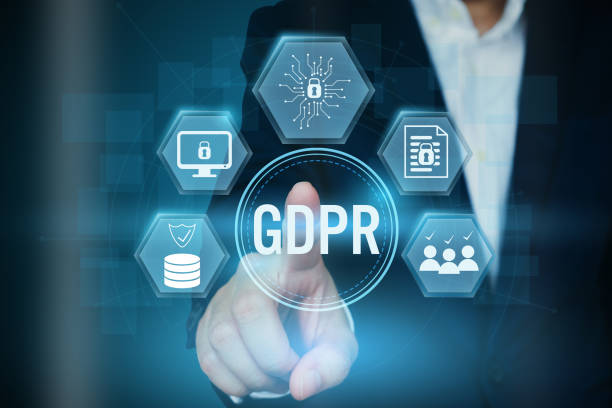
Schema Markup is a markup language that helps search engines better understand the content of your site.
By using Schema Markup, you can provide more accurate information about your content to search engines and increase your site’s chances of appearing in search results.
Schema Markup can be used for different types of content such as articles, products, events, instructions, etc.
On-Page SEO using Schema Markup provides more accurate information to search engines.
To use Schema Markup, you need to mark up your HTML code with Schema Markup tags.
These tags tell search engines what each part of your content means.
For example, if you have an article, you can use Schema Markup tags to specify the article title, author, publication date, etc.
If you have a product, you can use Schema Markup tags to specify the product name, price, description, etc.
There are various tools to create Schema Markup.
One of these tools is Google’s Structured Data Markup Helper, which helps you easily create Schema Markup code.
After creating the Schema Markup code, you need to place them in your HTML code.
Then, use Google’s Rich Results Test tool to check whether your Schema Markup is implemented correctly or not.
On-Page SEO requires correct implementation of Schema Markup.
In short, using Schema Markup is a great way to improve your site’s On-Page SEO.
By using Schema Markup, you can provide more accurate information about your content to search engines and increase your site’s chances of appearing in search results.
On-Page SEO with Schema Markup provides better visibility in search results.
By taking these steps, you can improve your site’s ranking in search engines and attract more traffic.
Analyzing and Continuously Improving On-Page SEO

Analysis and Continuous Improvement is a vital step in On-Page SEO.
After taking optimization measures, you should regularly check your site’s performance and identify strengths and weaknesses.
This helps you improve your SEO strategy and get better results.
On-Page SEO is an ongoing process and requires analysis and continuous improvement.
Use web analytics tools such as Google Analytics and Google Search Console to gain accurate information about site traffic, user behavior, keywords, and your site’s ranking.
Google Analytics shows you where users are coming from to your site, which pages they are visiting, and how long they are staying on your site.
Google Search Console shows you how your site appears in search results, what keywords are causing your site to appear, and what problems exist on your site.
Based on the information you get from analytics tools, you can identify your site’s strengths and weaknesses and take steps to improve them.
For example, if you notice that traffic to one of your site’s pages is low, you can optimize that page’s content, use more appropriate keywords, or create more internal links to that page.
If you notice that your site’s loading speed is slow, you can optimize your images, use caching systems, or use a Content Delivery Network (CDN).
On-Page SEO with accurate analysis ensures continuous improvement.
In short, analysis and continuous improvement is a vital step in On-Page SEO that helps you improve your site’s performance and get better results.
By using web analytics tools, identifying strengths and weaknesses, and taking improvement actions, you can continuously optimize your SEO strategy and improve your site’s ranking in search engines.
On-Page SEO requires continuous effort and constant updating.
By taking these steps, you can improve your site’s ranking in search engines and attract more traffic.
Optimal On-Page SEO will increase sales.
Frequently Asked Questions
| Question | Answer |
|---|---|
| What is a Meta Title and why is it important in On-Page SEO? | The meta title is the most important element of On-Page SEO, which is displayed at the top of the browser tab and in search results. This title helps search engines and users understand the main topic of the page and should include the main keyword. |
| What role does a Meta Description play in On-Page SEO? | The meta description is a short summary of the page’s content that is displayed below the title in search results. Although it does not directly affect ranking, its attractiveness can increase the click-through rate (CTR). |
| How should keywords be used in page content? | Keywords should be used naturally and relevantly in strategic locations such as the title, headings, first paragraph, and body of the text. Avoid excessive keyword stuffing. |
| What is the importance of high-quality and comprehensive content in On-Page SEO? | High-quality, unique, informative, and comprehensive content that meets user needs is of utmost importance. Search engines give a higher ranking to content that creates real value. |
| What is the application of heading tags (H1-H6) in the structure of On-Page SEO? | Heading tags (H1, H2, H3, etc.) are used to structure content and specify the importance of different sections. H1 is the main title of the page, and each page should only have one H1. Other tags are used for subheadings. |
| How to optimize images to improve On-Page SEO? | To optimize images, use descriptive alternative text (Alt Text) that includes relevant keywords, reduce the image file size without sacrificing quality, and use meaningful and relevant file names. |
| What are the characteristics of a SEO-friendly URL for On-Page SEO? | A friendly URL should be short, readable, descriptive, include main keywords, and be without extra characters. The URL structure should be hierarchical and logical so that it is understandable for both users and search engines. |
| How does Internal Linking help On-Page SEO? | Internal linking, by connecting related pages to each other, helps users and search engine crawlers to better understand the site structure, transfer the credibility of pages, and increase the user’s time on the site. |
| What is the impact of page loading speed on On-Page SEO? | High loading speed is critical for both user experience and SEO ranking. Slower pages may be ignored by search engines and lead to an increased Bounce Rate. |
| Why is mobile compatibility (Mobile-Friendliness) so important in On-Page SEO? | Given the increasing number of searches via mobile devices, having a responsive and mobile-compatible site is essential for user experience and ranking in search results (Google’s Mobile-First Indexing). |
And other services of Rasa Web advertising agency in the field of advertising
Smart Digital Branding: A combination of creativity and technology for digital branding through intelligent data analysis.
Smart Google Ads: Designed for businesses looking to increase click-through rates by optimizing key pages.
Smart Website Development: An effective tool for analyzing customer behavior with the help of intelligent data analysis.
Smart Direct Marketing: A professional solution to improve SEO ranking by focusing on attractive user interface design.
Smart Advertising Campaign: A novel service to increase customer acquisition through marketing automation.
And hundreds of other services in the field of internet advertising, advertising consulting and organizational solutions
Internet Advertising | Advertising Strategy | Advertorial
Resources
SEO News and Insights
,On-Page Optimization at Moz
,On-Page SEO Tutorial at Ahrefs
,SEO News – Search Engine Journal
? Is your business ready to leap into the digital world? Rasaweb Offering Digital Marketing Agency, with comprehensive services including advanced Online Store Design, professional SEO optimization and effective strategies in social networks, paves the way for your online success. Contact us for more information and expert advice.
📍 Tehran, Mirdamad Street, next to Central Bank, South Kazerun Alley, Ramin Alley No. 6



